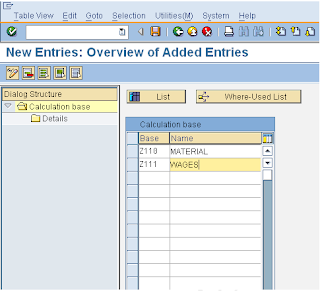 Use of costing sheet:
Use of costing sheet:
In the costing sheet, you determine the following:
- The direct costs to which overhead is applied (calculation base)
- The conditions under which overhead is applied (dependency)
- Whether overhead is calculated on a percentage basis or on a quantity basis
- The amount of the overhead percentage, or the amount of overhead for each unit of measure
- The validity period for the overhead
- Which object (cost center or order) is credited, and under which cost element for actual postings (credit key)
Overhead cost elements:
IMG à Controlling à Product Cost
Controlling à Product Cost Planning à Basic
Settings for Material Costing à Overhead à Maintain
Overhead Cost Elements
Overhead cost elements used to define overhead to products.
Calculation Base:
IMG à Controlling à Product Cost
Controlling à Product Cost Planning à Basic Settings
for Material Costing à Overhead à Costing
Sheet: Components à Define Calculation Bases
The calculation base determines to
which cost elements overhead is applied together.
We will define
2 bases on which overheads will be calculated:-
1) Materials
2) Wages








